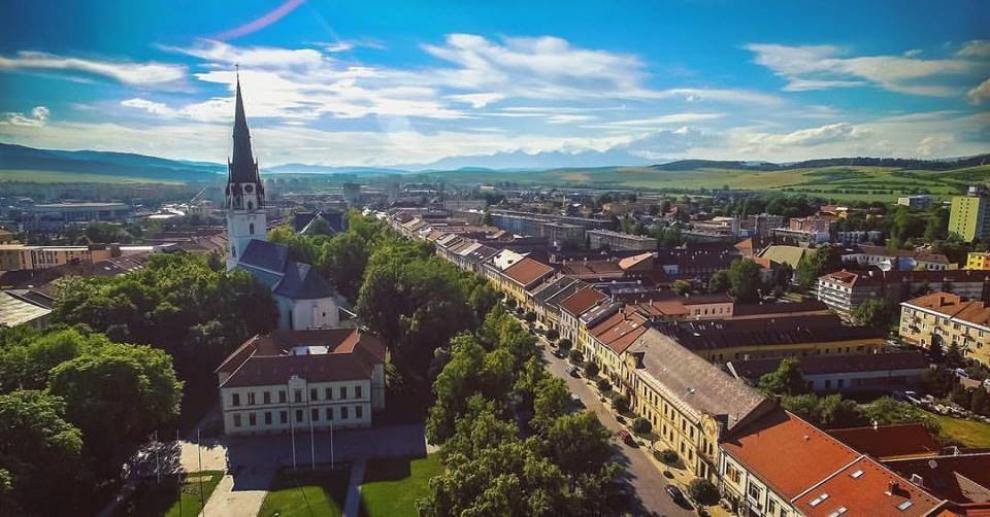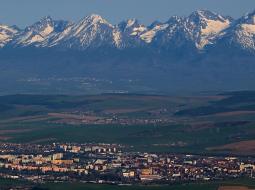Thessaloniki gets ready for its metro launch in November
The underground rapid transit lines have been under construction for almost two decades due to various project delays
 TheMayor.EU logo
TheMayor.EU logo 
The first written record of the town of Spišská Nová Ves dates to 1268 when it was referred to as Villa Nova. But the town is much older. At the turn of the Early and Middle Bronze Age the Ottoman culture determined its development.
Before the Tartar incursions in 1241-42 there were several hamlets scattered over the territority of the town. After the Tartars left, the inhabitants founded a new village named Nová Ves (Villa Nova).
King Belo IV had new colonists brought to this area to repopulate it, mainly from the region of Saxony, much of which was regularly flooded at that time. Between the years 1243-71 these new settlers created a “Saxony colony” in the region of Spiš and gained many royal privileges. The town of Spišská Nová Ves was founded by the integration of an old Slovak village into a newer German village.
On 6 December 1380 King Ľudovít I allowed its inhabitants to arrange weekly markets on Saturdays. According to royal rules, people could do business only on markets. At the end of the 14th century the town had fortifications, including a ditch and 4 gates.
On 30 July 1408 a privilege document, issued by king Sigmund, allowed the town to organize an annual fair on 15 August every year. The event lasted a few weeks and tradesmen came mainly from abroad with a wide variety of goods.
On 8 November 1412, a document was signed in Zagreb, and thanks to it, King Sigmund borrowed 37 000 Czech groschen that he needed for the war against Venice. At that time there was a prohibition on loans.
Because of that, King Sigmund of Luxembourg gave the town as a deposit to the Polish King together with thirteen other Spiš towns. The period under the Polish predominance lasted from 1413 to 1772.
On 6 December 1435 King Sigmund renewed and confirmed old privileges and granted Spišská Nová Ves the right to organize three annual fairs: in the spring, on 15 August and on 11 November. In the period between 1672 and 1684 small bands of the Thőkőly army looted the town twelve times. In the years of 1709-12 in the aftermath of the Rakoczy uprising, a horrific plague struck killing more than 2000 people.
On 5 November 1772, the town of Spišská Nová Ves was returned to the Hungarian king. Maria Teresa endeavored for the affiliation of Spiš towns during the first partition of Poland in St. Petersburg in 1772. She acquired Halič with three million inhabitants and Spiš towns.
In 1774 it was the seat of the 13 Spiš Towns province with 3 more towns included in 1778. In the period between 1778 and 1876 she created the Province of 16 Spiš towns at the head of which was Spišská Nová Ves.
In the beginning of the 19th century a few traders settled in the town. In 1812 there was the first manufacture. On 2 February 1849, a regiment of the Hungarian uprising army entered the town burning a large part of it together with the original church.
On 24 March 1939 the Hungarians bombarded the city airport. On 27 January 1945, the horrors of World War II ended. The Soviet army occupied the town, driving German troops away.
Spišská Nová Ves is a town in the Košice Region of Slovakia, situated on both banks of the Hornád River. It is located on the main railway line Košice - Bratislava with connections to the Czech Republic and Ukraine. It is the biggest town of the Spišská Nová Ves District. According to the 2001 census, the town had 39,193 inhabitants.
The economy of Spišská Nová Ves is based on tourism.

Spišská Nová Ves is a tourist destination, both because of the town itself and because of the natural environment of the nearby Slovak Paradise mountains.
The core of the town is a lens-shaped square, typical of medieval towns. It is rich in art and historical monuments.
Address: Radničné námestie 7, 052 01 Spišská Nová Ves